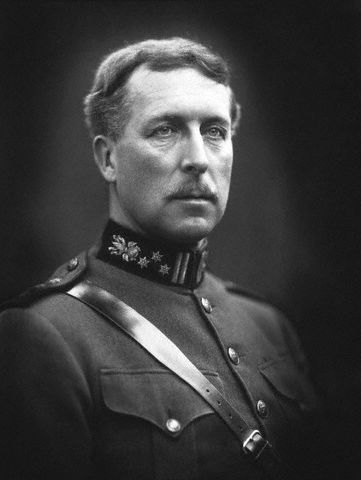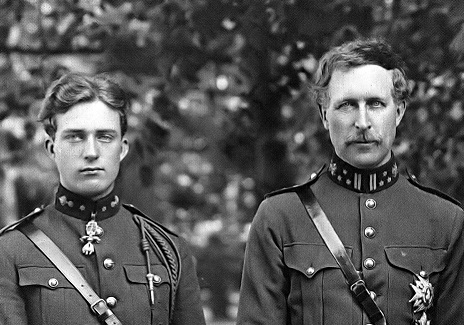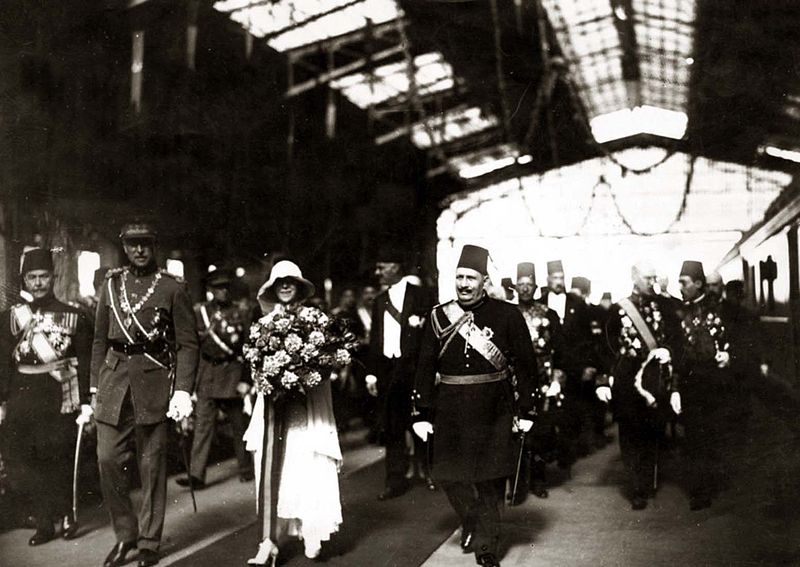<Back to Index>
- Physician Michele Mercati, 1541
- Composer Giuseppe Tartini, 1692
- King of the Belgians Albert I, 1875
PAGE SPONSOR
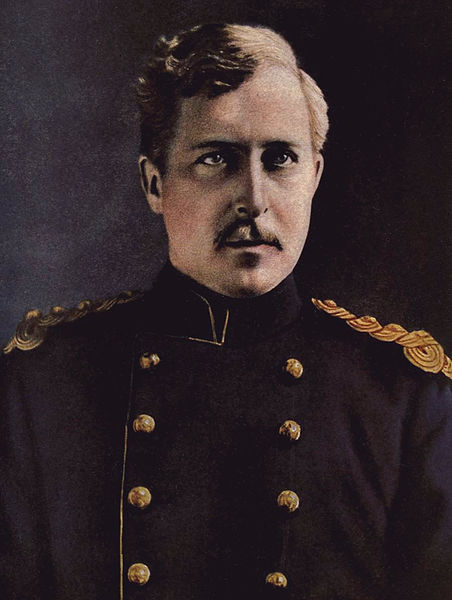
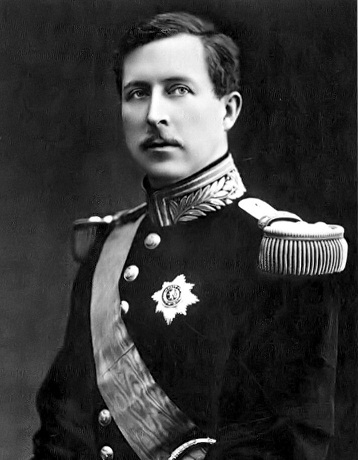
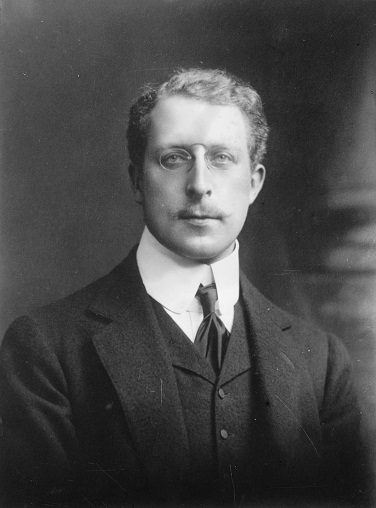
Albert I (8 April 1875 – 17 February 1934) reigned as King of the Belgians from 1909 until 1934.
Born Albert Léopold Clément Marie Meinrad (in German Albrecht Leopold Clemens Marie Meinrad) in Brussels, he was the fifth child and second son of Prince Philippe, Count of Flanders, and his wife, Princess Marie of Hohenzollern - Sigmaringen. Prince Philippe was the third (second surviving) son of Leopold I, the first King of the Belgians, and his wife, Marie-Louise of France, and the younger brother of King Leopold II of Belgium. Princess Marie was a relative of Kaiser Wilhelm II of Germany, and a member of the non-reigning, Catholic branch of the Hohenzollern family. Albert grew up in the Palace of Flanders, initially as fourth in the line of succession to the Belgian throne. When, however, the only legitimate son of his uncle, Leopold II, died as a child, and Albert's older brother, Prince Baudouin of Belgium, who had been subsequently prepared for the throne, also died young, Albert, at the age of 16, unexpectedly became second in line (after his father) to the Belgian Crown.
Retiring and studious, Albert prepared himself strenuously for the task of kingship. In his youth, Albert was seriously concerned with the situation of the working classes in Belgium, and personally traveled around working class districts incognito, to observe the living conditions of the people (Bronne). Shortly before his accession to the throne in 1909, Albert undertook an extensive tour of the Belgian Congo, which had been annexed by Belgium in 1906, finding the area in poor condition. Upon his return to Belgium, he recommended reforms to protect the native population and to further technological progress in the colony (Graham).
He was the 1,152nd Knight of the Order of the Golden Fleece in Austria and the 851st Knight of the Order of the Garter in 1914. Albert was married in Munich on 2 October 1900 to Duchess Elisabeth Gabrielle Valérie Marie in Bavaria, a Wittelsbach princess whom he had met at a family funeral. A daughter of Karl-Theodor, Duke in Bavaria, and his wife, the Infanta Maria Josepha of Portugal, she was born at Possenhofen Castle, Bavaria, Germany,
on 25 July 1876, and died on 23 November 1965. Based on the letters
written during their engagement and marriage (cited extensively in the
memoirs of their daughter, Marie-José) the young couple appear
to have been deeply in love. The letters express a deep mutual
affection based on a rare affinity of spirit (Regolo). They also make
clear that Albert and Elisabeth continually supported and encouraged
each other in their challenging and difficult roles as King and Queen.
The spouses shared an intense commitment to their country and family
and a keen interest in human progress of all kinds. Together, they
cultivated the friendship of prominent scientists, artists,
mathematicians, musicians, and philosophers, turning their court at
Laeken into a kind of cultural salon (Marie-José, Regolo).
Albert and Elisabeth had three children:
- Léopold Philippe Charles Albert Meinrad Hubertus Marie Miguel, Duke of Brabant, Prince of Belgium, who became later the fourth king of the Belgians as Leopold III (born 3 November 1901, and died at Woluwe-Saint-Lambert on 25 September 1983).
- Charles-Théodore Henri Antoine Meinrad, Count of Flanders, Prince of Belgium, Regent of Belgium (born Brussels 10 October 1903, and died at Ostend on 1 June 1983).
- Marie-José Charlotte Sophie Amélie Henriette Gabrielle, Princess of Belgium (born Ostend 4 August 1906 – 27 January 2001). She was married at Rome, Italy on 8 January 1930 to Prince Umberto Nicola Tommaso Giovanni Maria, Prince of Piemonte (born 15 September 1904 and died on 18 March 1983 at Geneva, Switzerland). He became King Umberto II of Italy.
King Albert was a devout Catholic (d'Ydewalle, Regolo, Gérard). Many stories illustrate his deep and tender piety. For instance, when his former tutor, General De Grunne, in his old age, entered the Benedictine monastery of Maredsous, Belgium, King Albert wrote a letter to him, in which he spoke of the joy of giving oneself to God (d'Ydewalle). He said: "May you spend many years at Maredsous in the supreme comfort of soul that is given, to natures touched by grace, by faith in God's infinite power and confidence in His goodness" (Gérard). To another friend, a Chinese diplomat, who became a Catholic monk, Albert wrote: "Consecrating oneself wholly to the service of Our Lord gives, to those touched by grace, the peace of soul which is the supreme happiness here below" (Gérard). Albert used to tell his children: "As you nourish your body, so you should nourish your soul" (Regolo). In an interesting meditation on what he viewed as the harm which would result if Christian ideals were abandoned in Belgium, he said: "Every time society has distanced itself from the Gospel, which preached humility, fraternity, and peace, the people have been unhappy, because the pagan civilization of ancient Rome, which they wanted to replace it with, is based only on pride and the abuse of force" (Commemorative speech for the war dead of the Battle of the Yser, given by Dom Marie-Albert, Abbot of Orval, Belgium, in 1936).
At the beginning of World War I, Albert resisted the illegal German demand to move troops through neutral Belgium in order to attack France. The refusal to permit the passage of troops was based on a respect for international law, and a concern for the balance of power in Europe, which, at the time, required that Belgium be a neutral buffer zone between Germany, France, and Great Britain (Bronne, Graham, Keyes, Thielemans). By defending the balance of power, King Albert also protected the interests of Belgium, since a small nation could easily fall prey to whichever great power became too strong (Thielemans). Albert famously responded to the German desire to move soldiers through his country: "I rule a nation, not a road!" When Germany subsequently invaded Belgium, King Albert, as prescribed by the Belgian constitution, took personal command of the Belgian army, and held the Germans off long enough for Britain and France to prepare for the Battle of the Marne (6 – 9 September 1914). He led his army through the Siege of Antwerp and the Battle of the Yser, when the Belgian army was driven back to a last, tiny strip of Belgian territory, near the North Sea. Here the Belgians, in collaboration with the armies of the Triple Entente, took up a war of position, in the trenches behind the River Yser, remaining there for the next four years. During this period, King Albert fought with his troops and shared their dangers, while his wife, Queen Elisabeth, worked as a nurse at the front. The King also allowed his 14-year-old son, Prince Leopold, to enlist in the Belgian army as a private and fight in the ranks (Graham, Keyes).
The war inflicted great suffering on Belgium, which was subjected to a harsh German occupation. The King, fearing the destructive results of the war for Belgium and Europe and appalled by the huge casualty rates, worked through secret diplomatic channels for a negotiated peace between Germany and the Entente based on the "no victors, no vanquished" concept. He considered that such a resolution to the conflict would best protect the interests of Belgium and the future peace and stability of Europe. Since, however, neither Germany nor the Entente were favorable to the idea, tending, instead, to seek total victory and the unconditional surrender of the enemy, Albert's attempts to further a negotiated peace were unsuccessful. In view of his disapproval of the breadth of Allied war aims, King Albert may have considered concluding a separate peace with Germany, if Belgium's independence could be assured and the country safely extricated from the war. Germany's attitude, however, made this impossible, since Germany was using Belgium as a lever to exert pressure on the Entente, and hence was unwilling to restore its independence (Thielemans). At the end of the war, as commander of the Army Group Flanders, consisting of Belgian, British and French divisions, Albert led the final offensive of the war that liberated occupied Belgium. King Albert, Queen Elisabeth, and their children then re-entered Brussels to a hero's welcome.
Upon his return to Brussels, King Albert made a speech in which he outlined the reforms he desired to see implemented in Belgium, including universal suffrage and the establishment of a Flemish University in Ghent. In 1918, he forged a post-war "Government of National Union" made up of members of the three main parties in Belgium, the Catholics, Liberals, and Socialists (Bronne, Keyes). Albert I remembered the Belgian general strike of 1913 and the promise, after it, of a Constitutional reform in favour of an actual one man, one vote universal suffrage (on 18 April 1893 at the end of the Belgian general strike of 1893, a universal suffrage, voted by the Parliament, gave plural votes based on wealth, education and age, but not an actual universal suffrage). The king attempted to mediate between parties in favour of the universal suffrage or opposed to it in order to institute a one man one vote universal suffrage and he succeeded. Some people named that the conspiracy of Loppem because the one man, one vote suffrage was instituted without changing the Belgian constitution.
King Albert attended the Paris Peace Conference, where he defended the interests of Belgium, insisting on war reparations to enable his devastated country to be restored economically, but also opposed a policy of excessive humiliation of defeated Germany. Albert feared that such a policy would only provoke German revenge and lead to future wars in Europe (Léopold III by Vincent Dujardin, Mark van den Wijngaert, et al.). He also considered that the dethronement of the princes of Central Europe and, in particular, the dissolution of the Habsburg Empire would constitute a serious menace to peace and stability on the continent (d'Ydewalle). His views, however, did not prevail in the decisions of the Peace Conference. Albert spent much of the remainder of his reign assisting in the post-war reconstruction of Belgium. Albert was a committed conservationist and in 1925, influenced by the ideas of Carl E. Akeley, he founded Africa's first national park, now known as Virunga National Park, in what is now Democratic Republic of Congo. During this period he was also the first European monarch to visit the United States.
A passionate alpinist, King Albert I died in a mountaineering accident while climbing alone on the Roche du Vieux Bon Dieu at Marche-les-Dames, in the Ardennes region of Belgium near Namur.
His death shocked the world and he was deeply mourned, both in Belgium
and abroad. Because King Albert was an expert climber, some questioned
the official version of his death. Nonetheless, rumors of murder have
been dismissed by most historians. King Albert is interred in the Royal
Crypt at the Church of Our Lady of Laeken in Brussels.
In 1935, prominent Belgian author Emile Cammaerts published
a widely acclaimed biography of King Albert I, titled "Albert of
Belgium: Defender of Right." In 1993, a close climbing companion of the
King, Walter Amstutz, founded the King Albert I Memorial Foundation, an association based in Switzerlandand dedicated to honoring distinguished individuals in the mountaineering world.
Celebrating
175 years of Belgian Dynasty and the 100th anniversary of his
coronation, Albert I was recently selected as the main motif of a high-value collectors' coin: the Belgian 12.5 euro
Albert I commemorative coin, minted in 2008. The obverse shows a portrait of the King.
